The year 2021 was a turning point for the crypto industry as a whole. In October 2021, the worldwide crypto market capitalization reached $3 trillion, the biggest it has ever been. Other crypto elements such as non-fungible tokens (NFTs), the metaverse, and Web 3.0, in addition to cryptocurrencies, have seen substantial growth in terms of awareness and popularity. Web 3.0 is the internet’s next iteration, with a focus on decentralization. Its goal is to provide a level of transparency in which smart contracts, rather than centralized organizations, govern user data and transactions.
We will cover the best web 3.0 by market capitalization in this article. While we believe they are good investments, we are not providing expert investment advice, and anybody who buys anything we recommend is solely responsible for their funds earned or lost.
Evolution of web 3.0?
Web 1.0: It was the era when most websites were static and created by businesses. During this time, people who saw an opportunity bought domain names with the intention of selling them later at a higher price to businesses that needed them.
Web 2.0: It was the period of social media and user-generated content. Users were encouraged to communicate and connect with one another using social media platforms such as blogs and vlogs, which have since become popular. The transition translates to more content creation with a smaller set of corporate goliaths like Google, Microsoft, and Facebook controlling most of the data. This also led to the discussion of whether or not the user’s privacy is protected.
Web 3.0: It emphasizes decentralization, which is based on the concept of peer-to-peer internet solutions, in which consumers have a choice over how their data is utilized. Web 3.0 is expected to use blockchain technology to improve data openness and content accessibility, especially as many applications and services are starting to use blockchain technology, metaverses, and artificial intelligence (AI). This technique eliminates the need for a central authority to store data and helps to maintain security through widespread consensus. Essentially, it intends to return control to individuals and its users, rather than large corporations like Google.
Polkadot (DOT)
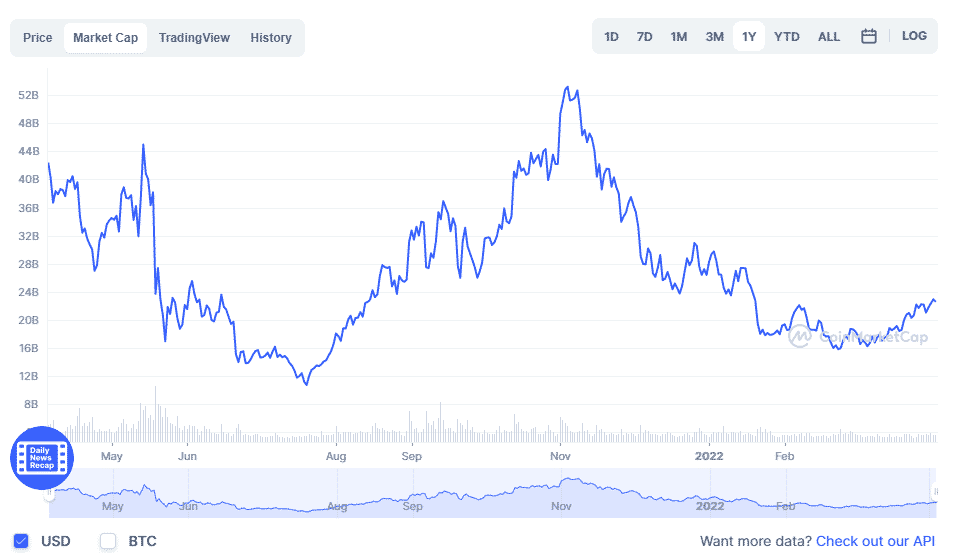
Alt: Polkadot 1-year market cap chart
Polkadot is a layer-0 metaprotocol that underlies and provides the format for a network of layer 1 blockchains called parachains (parallel chains). It is also capable of changing its own codebase autonomously and forklessly via on-chain governance according to the desire of its token holder community as a meta protocol.
Through the Polkadot Relay Chain, the Polkadot protocol can connect public and private chains, permissionless networks, oracles, and future technologies, allowing these disparate blockchains to share information and transactions securely.
Polkadot’s native DOT coin has three distinct functions: operational and security staking, network governance facilitation, and bonding tokens to connect parachains.
Chainlink (LINK)
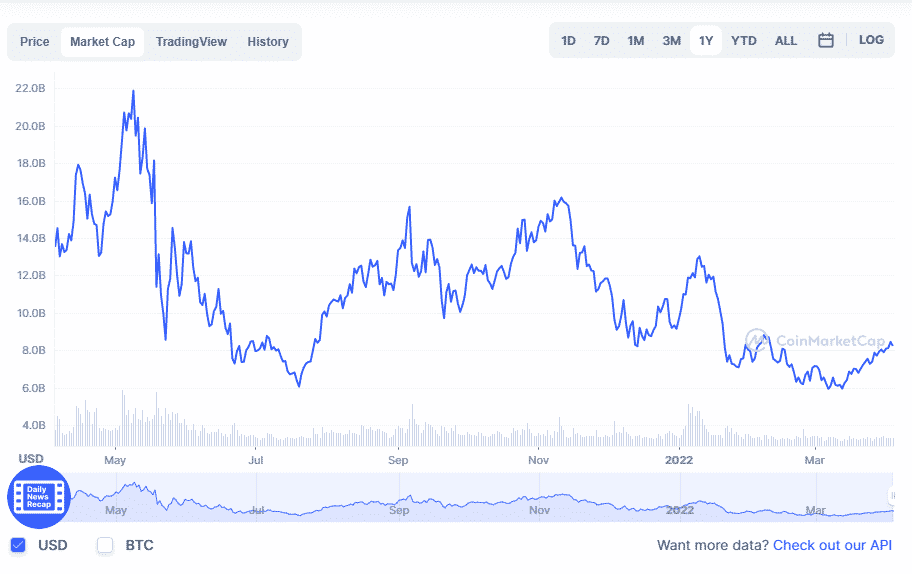
Chainlink is a blockchain abstraction layer that enables smart contracts to be connected across several blockchains. It uses a decentralized oracle network to safely connect blockchains to external data feeds, events, and payment mechanisms, giving the critical off-chain information required by intricate smart contracts to become the dominant form of digital agreement.
The network is powered by a huge open community of data producers, node operators, smart contract developers, researchers, security auditors, and others. The company is focused on ensuring decentralized involvement for all node operators and users who want to contribute to the network.
The LINK cryptocurrency is utilized to incentivize Chainlink node operators. These network participants are paid in LINK for securely transporting data to and from blockchains.
Filecoin (FIL)
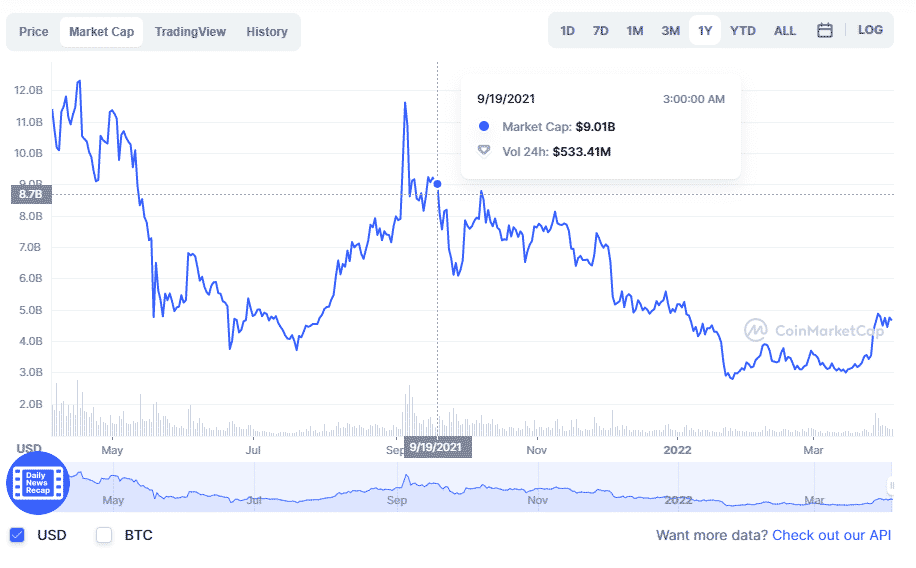
Filecoin is a decentralized storage system with the goal of “storing humanity’s most vital data.” The storage device may hold almost any type of data, including music files, films, still photos, and text. It also claims to be safe for more sensitive data, such as confidential company records and data.
On the investor side, they are rewarded for providing storage space. By allowing anyone to make storage space available to Filecoin consumers, the network promotes competitive costs. The vendors then earn FIL, the blockchain native money, in a passive manner. The more storage a person provides, the more FILs they will obtain. They introduced FileCoin Plus in October 2021, allowing storage providers to connect with verified clients.
Theta Network (THETA)
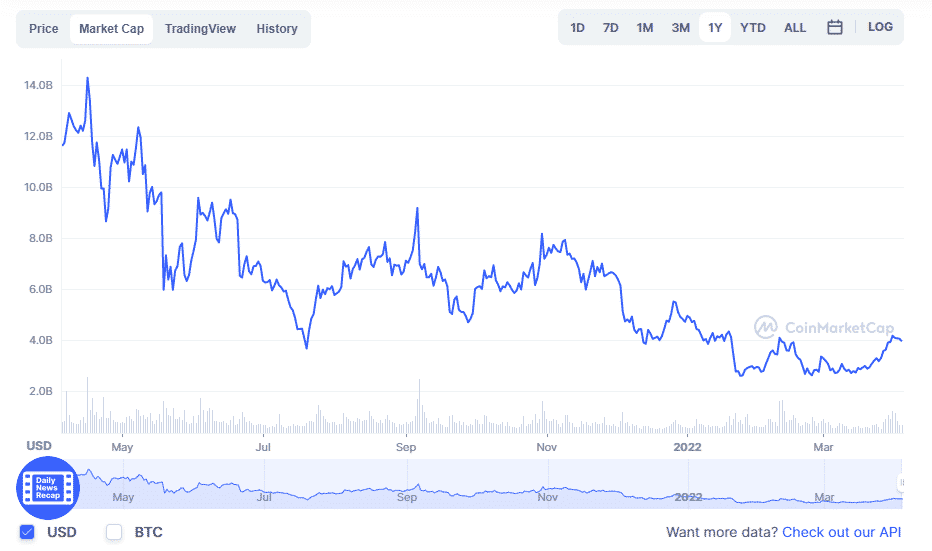
Theta (THETA) is a blockchain-based network that was created specifically for video streaming. The platform is a peer-to-peer (P2P) network in which users share bandwidth and computational resources. Steve Chen, co-founder of YouTube, and Justin Kan, co-founder of Twitch, are the main advisors of the project.
THETA, Theta’s native cryptocurrency token, is used to carry out various governance functions within the network. According to the project’s creators, the project intends to shake up the video streaming market in its current state, where centralization, bad infrastructure, and high expenses result in a terrible user experience. Due to the obstacles between content providers and end-users, content creators also make less money.
Helium (HNT)
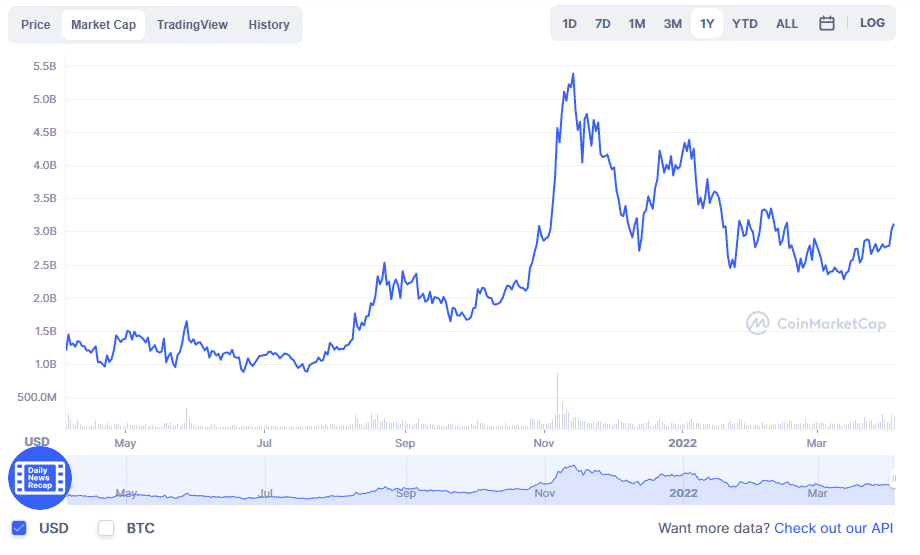
Helium (HNT) is a blockchain-based decentralized network for the Internet of Things (IoT) devices. The Helium mainnet, which was launched in July 2019, lets low-powered wireless devices communicate with one another and send data through its network of nodes.
Hotspots, which are a combination of a wireless gateway and a blockchain mining device, are used as nodes. Users who run nodes earn HNT, the blockchain native cryptocurrency token, as a result of their efforts. Helium’s mission since its inception in 2013 has been to prepare IoT connectivity for the future by finding flaws in the current infrastructure.
Summary
The third-generation internet, or Web 3.0, is characterized by apps and websites that handle data in a more human-like manner. Huge corporations presently control a large portion of the internet’s control. Blockchain technology is projected to be used in Web 3.0 to promote data transparency and content accessibility. Top web 3.0 projects by market cap include Polkadot, Chainlink, Filecoin, Theta Network, and Helium.



